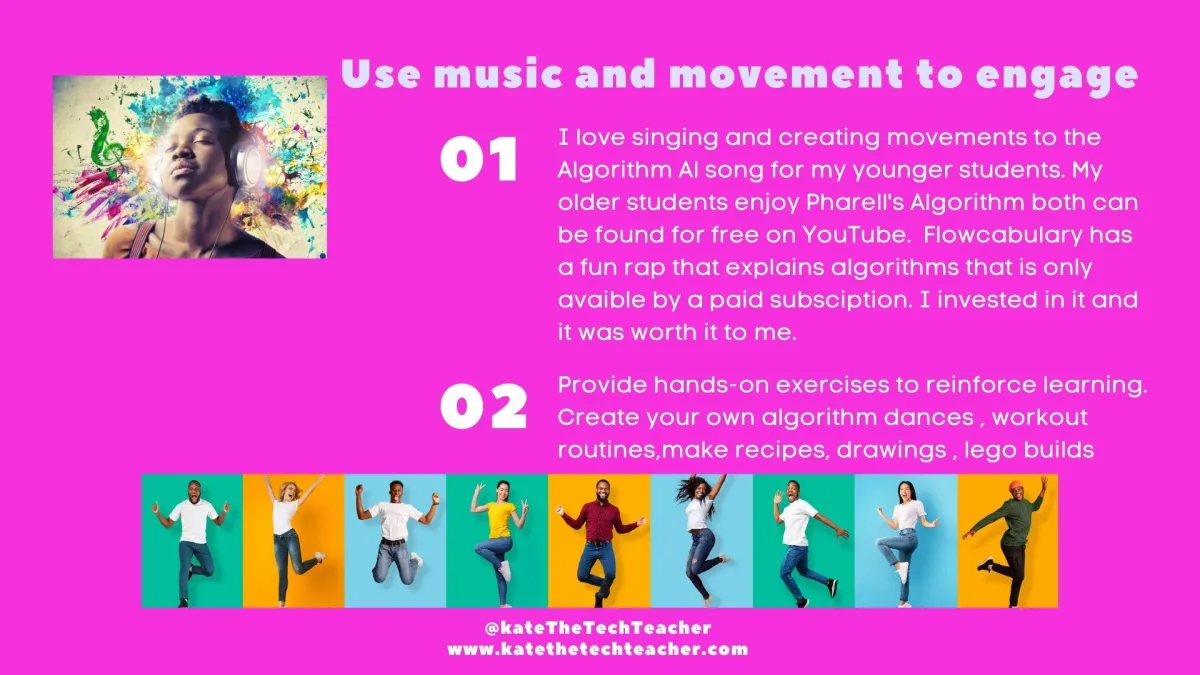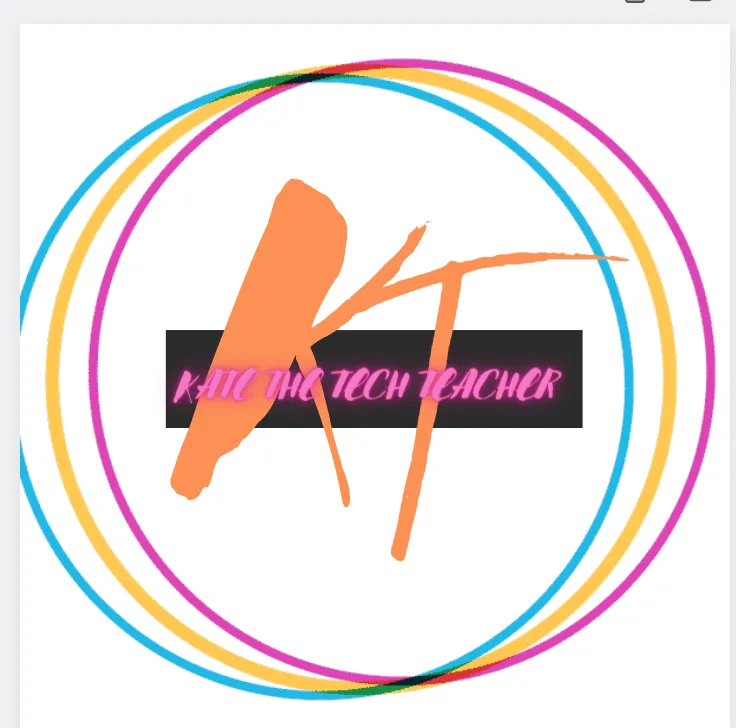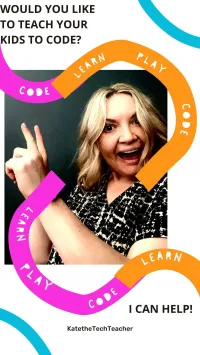Blog Posts
Unlocking the World of Coding: Empowering Elementary Teachers to Teach Coding with Confidence

Integrating Music and Movement Activities to Teach Coding Fundamentals
"Tell me, and I forget. Show me, and I remember. Involve me, and I understand." – Confucius
Introduction:
As an elementary or middle school teacher, you’re always looking for innovative ways to engage your students and expand their horizons. If you’re a STEM teacher or interested in teaching coding fundamentals to K-8 students, integrating music and movement activities into your lessons can be a highly effective approach. This method not only makes learning fun but also helps reinforce key concepts such as algorithms in a memorable way.

With that said, here are 3 ways to teach algorithms using movement and music !
1. Introducing Algorithms with Music
For Kindergarten to 2nd Grade
Start your classes with a catchy tune that introduces the concept of algorithms. A great song to use is “Algorithm Al.” Sing this song with your students at the beginning of each class to help them understand that algorithms are simply a set of instructions. The repetitive nature of the song makes it easy for young learners to grasp the concept. You can find this video on the resources page of my website https://katethetechteacher.com/resourcepage
For 3rd Grade and Up
For older students, you can use more complex and relatable songs. Pharrell’s song “Algorithm” or Flocabulary’s rap song about algorithms are excellent choices. These songs can spark interest and make the abstract concept of algorithms more concrete. Plus, music has a way of sticking in our minds, so your students are likely to remember the principles of algorithms long after the lesson is over.
Fun Activities to Reinforce Algorithms
1. Algorithm Dances
Get your students moving with algorithm dances. Create a dance routine that follows a specific sequence of steps, just like an algorithm. For example, you could have students perform a series of movements like clap, jump, spin, and then repeat. This activity helps them understand that algorithms are a set of steps that must be followed in order.
2. Algorithm Hopscotch
Turn a classic playground game into a coding lesson with Algorithm Hopscotch. Draw a hopscotch grid and write different actions in each square, such as “hop on one foot,” “spin,” or “jump twice.” Have students follow the sequence of actions, reinforcing the idea that algorithms are about following a set of instructions in a specific order.
3. Hot and Cold: Find the Item Algorithm Game
Another fun activity is the Hot and Cold: Find the Item Algorithm game. In this game, an item is hidden somewhere in the classroom, and students must create algorithm clues to find it. Here's how it works:
Step 1: Hide an item somewhere in the classroom.
Step 2: Choose a student to start searching for the item.
Step 3: The rest of the class gives clues by giving directions in order where to go step 1 as the student gets closer to the item the students can say “hotter” and "colder" as they move further away.
Step 4: Once the item is found, discuss the steps the student took to locate it, emphasizing the sequence of actions and decision-making process.
This game encourages students to think critically and follow a sequence of clues, reinforcing the concept of algorithms as a series of steps to achieve a goal.
Why Use Music and Movement?
Integrating music and movement into your coding lessons offers several benefits:
Engagement: Music and movement activities capture students’ attention and make learning enjoyable.
Memory: Rhythmic and repetitive songs aid in memorization, helping students retain coding concepts.
Physical Activity: These activities provide a break from traditional classroom routines and incorporate physical exercise, which is beneficial for young learners.
Conclusion
Teaching coding fundamentals through music and movement can transform your classroom into an engaging and dynamic learning environment. Whether you’re introducing algorithms with a song or reinforcing concepts with fun activities like Algorithm Dances, Algorithm Hopscotch, or the Hot and Cold Algorithm game, these methods can make coding accessible and enjoyable for all students.
By integrating these creative strategies into your lessons, you’re not only helping your students understand coding fundamentals but also fostering a love for STEM education. Start using these music and movement activities today to enhance your teaching toolkit and inspire the next generation of coders!
Click Here to Receive your Free Algorithm Dance Lesson Play Today!
© KateThetechteacher.COM | ALL RIGHTS RESERVED | TERMS & CONDITIONS | SITE BY FUNNEL GORGEOUS

